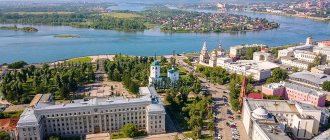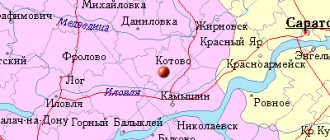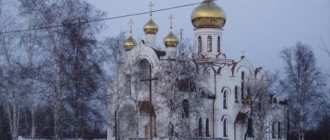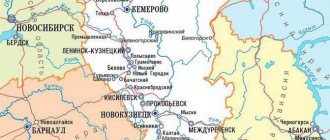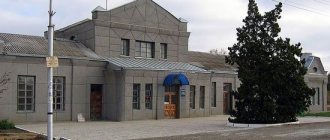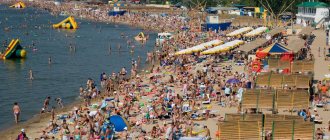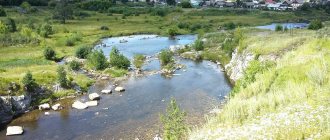- October 10, 2019
- Regions
- Evgenia Yushkova
Previously, the name Yekaterinburg was not even mentioned. At the confluence of two rivers (Uktuska and Iset) lay a sparsely populated mountainous area that many Russians had never heard of. In those days, in the area of the Ural ridge there were no residential buildings or farm yards, only taiga, wild animals and wilderness. Now here is the largest industrial and cultural center, the fourth most populous city in Russia.
Founding history
The first settlers settled on the territory of today's Yekaterinburg at the end of the 17th century. These were Old Believers who found solitude far from noisy cities. Gradually, the villages grew and were populated by peasants and artisans.
At the beginning of 1702, the head of the Siberian Order, the Dutchman A. Vinius, arrived in these places. It turned out that Uktusk is rich in iron ore and minerals. By order of Peter I, a state-owned ironworks was founded on its shore. Construction took two years. During this time, Uktuska was blocked by a dam, and hammer factories, blast furnaces, a forge and several outbuildings grew on its banks. In the surrounding area, a wooden church was erected, a commander's courtyard, orders and residential buildings were built. A fort was built nearby. Already in 1704, the company produced the first products from cast iron and iron: nails, boilers, bombs, cannonballs, buckshot, anchors.
The glory of the new plant was short-lived. A fire in 1718 destroyed almost all wooden buildings and equipment. 4 years later, artillery captain Vasily Tatishchev arrived here with an order to select a new site for the construction of a more powerful plant. He ordered to place it at the mouth of the Iset River. On November 18, 1723, the largest ironworks in Russia by the standards of that time produced its first products. From this day the city's chronology begins.
Verkh-Isetsky
The second largest district of the Sverdlovsk capital occupied an area of 240 square meters. km. It was named after a reservoir and a metallurgical plant. The date of formation of the district is 1919. There are only four industrial enterprises on the territory, and a third of the territory is a forested area and reservoirs. From an environmental point of view, this is one of the cleanest parts of the city. The housing stock offers apartments with an average price policy. The infrastructure is well developed, and the authorities promise to build a second metro line to the area. The decoration of the area is business, which attracts tourists from neighboring regions all year round. Population – 221 thousand people.
The area has well-developed cultural and sports spheres. The territory contains more than 75 architectural and historical monuments, more than 30 cultural and art institutions, museums, libraries, 16 hotels and almost 150 sports institutions.
New residential microdistrict in the Verkh-Isetskaya part of the city
Why was Yekaterinburg called Yekaterinburg
The city owes its sonorous name to the Russian engineer with Dutch roots, William de Gennin. He proposed to name this settlement in honor of the wife of Peter I, Catherine. There is an opinion that the toponym is also connected with the name of the patroness of mining, the Holy Great Martyr Catherine of Alexandria. The history of the name of the city of Yekaterinburg is inextricably linked with the construction of factory workshops and residential areas for artisans.
The city was rapidly developing and rebuilt. It became the center of the mining and ore mining cluster of the Ural region. Yekaterinburg occupied major positions in the production of cast iron and copper, the casting of cannons and cannonballs, and the manufacture of edged weapons.
The period of formation of the Russian Empire
During the reign of Catherine the Great, the city acquired the status of a district town. This happened in 1781. The design of his coat of arms is interesting. At the top, on a red background, was a silver bear carrying the Gospel in a gold frame on its back. Above it is a silver cross. In the lower part on the green field there is a silver smelting furnace and a mining shaft. These are symbols of the mining and metallurgical industries.
The Great Siberian Highway, laid in 1763 through the territory of Yekaterinburg, became a powerful impetus for the development of the city. This was the main trade route of the Russian Empire, providing access to the riches of Siberia.
In the first years of the 19th century, Yekaterinburg industry reoriented toward mechanical engineering. In 1807, Ekaterinburg once again confirmed its importance for the state, receiving the status of a mountain city in Russia. Academician Johann Gmelin wrote:
Anyone who wants to get acquainted with mining and factory work should only visit Yekaterinburg
The time period 1878 - 1888 was marked by the construction of the Ural branch of the railway, connecting Yekaterinburg with Perm and Tyumen, and in 1897, communication with Chelyabinsk was established, and access to the Trans-Siberian Railway appeared. The city lived, grew and developed. At the dawn of the 20th century, its population was more than 50 thousand people. 49 large enterprises and more than 300 small workshops operated here.
City information
Yekaterinburg is the administrative center of the Sverdlovsk region. Located in the central part of Eurasia. Located on the banks of the Iset River. The economy is characterized by high business activity. There are mechanical engineering, food industry, energy, and metallurgy enterprises.
Important roads pass through the settlement: the federal highway M5 Ural, highways connecting with other cities. There is a large railway junction, consisting of 7 main lines. Koltsovo International Airport is located. There are vocational educational institutions, universities and their branches.
It is the fourth most populous city in the Russian Federation. The population there is about 1.5 million people.
In the fire of revolution and civil war
The October events of 1917 changed the lives of the townspeople. During this period, the city of Yekaterinburg was called the same as before, but socialist reality dictated completely different canons. At the beginning of 1918, the Catherine Governorate was formed, and in March the Ural Military District was formed with Yekaterinburg as its center.
During this period, the city became the site of tragic events. On the night of July 16-17, 1918, the last Russian Emperor Nicholas II, his family, doctor Botkin and several servants were brutally shot in the basement of the house of engineer Ipatiev.
Later, the city was occupied by formations of the Czechoslovak Corps, then came under the rule of Admiral Kolchak. He planned to settle here with his headquarters. But in mid-July 1919, Red Army soldiers entered Yekaterinburg. The city became Soviet again.
Flag
The flag of Yekaterinburg is made in the form of a rectangular panel. The aspect ratio is 2:3. It is divided into 3 horizontal stripes. The top (yellow) and bottom (blue) are 1/4 the size of the flag, the middle (green) is 1/2. In the center of the green stripe are some elements of the coat of arms (mining shaft and smelting furnace).
The flag was approved by the decision of the Council of Deputies of the Yekaterinburg City Duma dated June 24, 2008.
What was Yekaterinburg called in Soviet times?
An important historical moment of the early 1920s can be considered the movement of the center of the Ural region here from Perm and the opening of the first Ural University. Enterprises were nationalized and restored, plants and factories were opened, and the production of new types of products began.
In 1924, by decision of the government, the city was renamed in honor of the Chairman of the All-Russian Central Executive Committee Yakov Sverdlov, who lived and worked here before the revolution. He was a fiery revolutionary, a faithful Leninist, who passed away in 1919.
The flames of the civil war and the subsequent 70 years of building communism brought significant losses to the appearance of the city. Sculptural monuments were dismantled, churches were looted, cemetery monuments were demolished, and then the cemeteries themselves. Representatives of the new government destroyed the most beautiful cathedrals, which were architectural masterpieces and determined the historical appearance of Yekaterinburg.
Regional settlements received new names: Nadezhdinsk became Serov, Shaitansk - Pervouralsk, Bogoslovsk - Karpinsky. The village of Petropavlovsky received the name Severouralsk, the village of Kudelka became Asbest, the Irbit plant became Krasnogvardeysky.
Many city streets and squares have lost their historical names. Government officials were not concerned about the fact that such changes would bring confusion into the ordinary lives of citizens and create confusion in addresses. Years passed, generations of Sverdlovsk residents changed. Gradually people forgot about what Yekaterinburg used to be called.
Sverdlovsk is the administrative center of the Ural region
1925-1929 - a time of great change. A water supply system was built and a powerful radio station was put into operation. Gradually, the life of the townspeople became more active and eventful. The year 1932 was marked by the opening of the Ural branch of the USSR Academy of Sciences. 27 research institutes worked in various industries. The opening of the Koltsovo military airfield, the reconstruction of enterprises, and the construction of new factory buildings are important milestones of those years.
By the beginning of the 40s of the 20th century, 85 enterprises of union and republican significance were successfully operating in the city. Almost half of all output came from mechanical engineering and metalworking. Sverdlovsk prospered, residents had jobs and decent wages, dreamed about the future, believed in a happy tomorrow.
What's interestnig?
Yekaterinburg has many attractions - it has a unique mix of architectural, historical and cultural rarities. The city has more than 60 historical and cultural monuments, 43 of which are considered national monuments due to their special significance. That is why Ekaterinburg can be declared as “the most historical city in Russia.”
Currently, Yekaterinburg is one of the largest industrial centers. Its enterprises produce industrial goods for heavy engineering and military purposes.
Ekaterinburg is not a very old city, with more than 285 years of history, but it is very unique as the founder of Russian industry, but also due to its geographical location. Unfortunately, very few old buildings have been preserved at present, the oldest (1764) of which is located in the historical park of the city, but it has also been reconstructed.
The historical center of Yekaterinburg is a dam on the Iset River, where in the 18th century there was a metallurgical plant, and now in its place there is a museum of the Ural industry and modern art. Not far from the embankment is the Literary Quarter - a quiet romantic place among the noisy streets, where you can stroll past the monuments of wooden architecture of the Urals.
For lovers of theatrical art, on the main street of the city there is the Opera and Ballet Theater, built in the mid-19th century in the classicist style, the Sverdlovsk Philharmonic where you can hear organ music, symphony and jazz orchestras, and many other theaters.
There is also a Circus in the city with a unique roof - a dome in which world-class artists perform. A similar dome by the architect Nemeyer can only be seen in Brazil. Next to the circus there is a magnificent arboretum with a variety of plants from different parts of the world. There is also a Zoo in the city where you can meet polar bears, hippopotamuses and other exotic animals.
The city has preserved a large number of architectural monuments, made in the rare style of the 20s of the industrial age of constructivism (the Big Ural Hotel, Iset, the White Tower, a building on the Boulevard of Culture, a film studio, the Chekist Town, the former building of the Palace of Culture named after. Dzerzhinsky - now the Sverdlovsk Museum of Local Lore and others).
On New Year's holidays, on the main square of the city you can see the Ice Town - this is an entire city within the city, created from ice, inside of which there are attractions and ice sculptures.
During the Great Patriotic War
Sverdlovsk had a deep rear. But the inhabitants of this harsh region also made a worthy contribution to the victory. More than 100 thousand Sverdlovsk residents were called to the front. 62 soldiers became Heroes of the Soviet Union, 13 thousand became holders of orders and medals. More than 500 formations were sent to the front line, including the famous 22nd Army and the Ural Volunteer Tank Corps.
More than 50 large enterprises were evacuated here from territories captured by the Nazis. On their basis, the production of military equipment, weapons and ammunition was launched. Sverdlovsk residents forged victory at the machines.
Residents of Sverdlovsk temporarily forgot ancient Yekaterinburg and why their city was called that.

